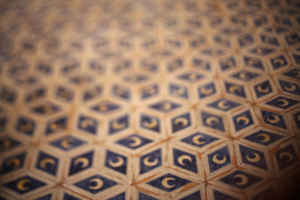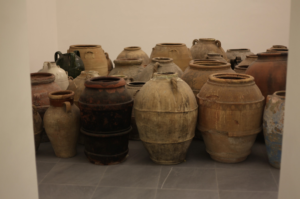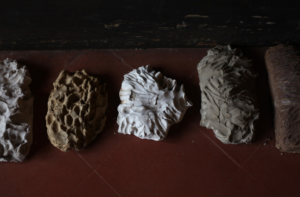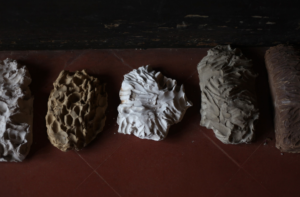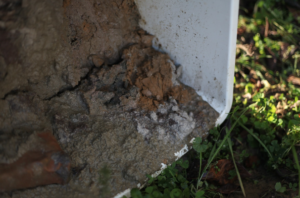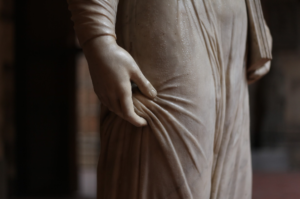The complex geology of Italy is largely responsible for Italy’s rich art history, from the renaissance marble of Carrara to the iron-rich clay of majolica pottery. The active tectonics of the region cause earthquakes, volcanic activity, uplift, and erosion, as the African and Eurasian plates collide.
In Tuscany, this constant change has created the dramatic hills and cliffs that surround Villa Lena.
The landscape is sculpted by the erosive power of water acting on young (geologically speaking), soft sediment left behind by an ancient sea. Evidence of this ocean environment can be found all around Villa Lena. Sculptural grey limestone concretions, fossilised shells, preserved casts of animal burrows, and sandy cross-bedding all indicate a calcium-rich ocean environment, in which rivers draining from nearby continents provided vast supplies of sediment.
Just as renaissance artists and scientists studied human bodies in order to better represent them, they studied the rocks of Tuscany in order to more accurately depict them and understand the way the Earth works. The drawings of da Vinci, in particular, demonstrate an interest in the sedimentary layers of the landscape and their interaction with water.
The Galileo Science Museum, in Florence, is filled with scientific instruments that dance with sculptural beauty and craftsmanship. The Museo di Storia Naturale di Firenze hints at the wonders hidden in Tuscany’s loose sediments, reconstructing entire seafloor environments using fossils. Outside of institutions of science, pay attention to the building materials of local buildings in the small towns, which can give clues to the layers of harder bedrocks hidden under the soft erosive materials. Patient rock hunting along the beaches of Cinque Terre lead to more delightful surprises as natural and manmade objects alike are smoothed and rounded by the relentless tumbling of the waves.
In Siena’s Duomo, stunning marble slabs are framed and presented as works of art in their own right alongside marble works by Donatello and Michelangelo.
The rocks of Italy blend the divide between the natural and manmade universes that the Renaissance sought to reconcile, bringing scientists and artist to celebrate and fear Vesuvius, hunch over to inspect a pebble, or dig clay to reshape with their own application of geology’s ever-present ingredients: pressure and heat.
